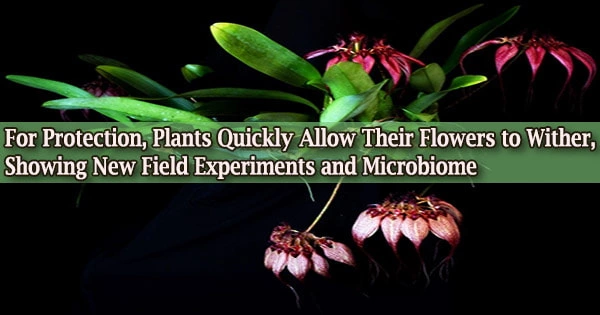The yields of flowers are negatively impacted by microbes growing on them. According to a recent study that combined field research with plant microbiome analysis, this is the reason why plants quickly shed their blossoms.
The results of a collaborative team of researchers from Kyoto University in Japan and the Centre for Research on Ecology and Forestry Applications (CREAF, Spain) have been published in the open-access academic journal Metabarcoding and Metagenomics.
In terms of science, a plant’s blooms are its reproductive system. However, unlike mammals, perennial plants create them from scratch each season and only keep them for as long as they are required.
While some earlier studies have already examined the variety in floral life spans among species, they focused mostly on the trade-off between the value that plants would derive from keeping their reproductive organs and the energy they would expend on making and sustaining their flowers.
Prior to the current study, the team did find another angle to examine the phenomenon: why did plants invest their energy, even though the “cost” was negligible, to produce delicate flowers that would wither in a matter of days, rather than investing a little more of it to produce a great deal more durable ones, thereby increasing their reproductive success?
“Interestingly, flower lifespan is negatively correlated with temperature; the hotter the environment where they bloom, the shorter the period a plant retains them. The phenomenon has been known for a long time,” comments Shoko Sakai, author of the present study.
“Then, at some point, I came up with the hypothesis that antagonistic microbes, such as bacteria and fungi growing on flowers after the flower bud opens, must be the driver that shortens the lifespan of a flower. I doubted that it was a coincidence that microbes grow faster in higher temperatures.”
So far, flower characteristics have mostly been studied in the context of their interactions with pollinators. Recent studies have raised the question of whether we have overlooked the roles of microbes in the studies of floral characteristics. For example, flower volatiles which are often regarded as a primary pollinator attractant can also function to suppress antagonistic microbes. The impacts of microbes on plant reproductive ecology may be more deeply embedded in the evolution of angiosperms than we have considered.
Shoko Sakai
Microbes can find a variety of homes in flowers. They draw pollinators by releasing nectar, which is full of carbohydrates and frequently also includes other nutrients like lipids and amino acids.
The stigma is a growing chamber for pollen tubes and a germination bed for pollen grains. It preserves the nutrients and humidity required for the formation of pollen tubes.
Unsurprisingly, as a flower opens, the number of microorganisms grows more numerous with time. The researchers conducted field tests to explore what microbial communities might develop on flowers if their longevity was increased before drawing any conclusions.
They did this by extracting microorganisms from old blossoms of the Japanese species of wild ginger (Alpinia japonica), which blooms in the early summer when the country’s hot and muggy climate is optimal for microbial growth. The microorganisms were then spread to additional wild ginger plants, whose blooms had just begun to bloom.
The research team saw that the plant produced noticeably fewer fruits, which was consistent with their original hypothesis, even though there were no obvious illness indications on the blooms or fruits.
The microbiomes of the plants did, however, demonstrate the presence of various bacterial groups that were evolving throughout time. These bacteria are classified as “resident” for the plant because they can be discovered on the flower buds of flowers that have not been treated.
“So far, flower characteristics have mostly been studied in the context of their interactions with pollinators. Recent studies have raised the question of whether we have overlooked the roles of microbes in the studies of floral characteristics. For example, flower volatiles which are often regarded as a primary pollinator attractant can also function to suppress antagonistic microbes. The impacts of microbes on plant reproductive ecology may be more deeply embedded in the evolution of angiosperms than we have considered,” says Sakai in conclusion.





